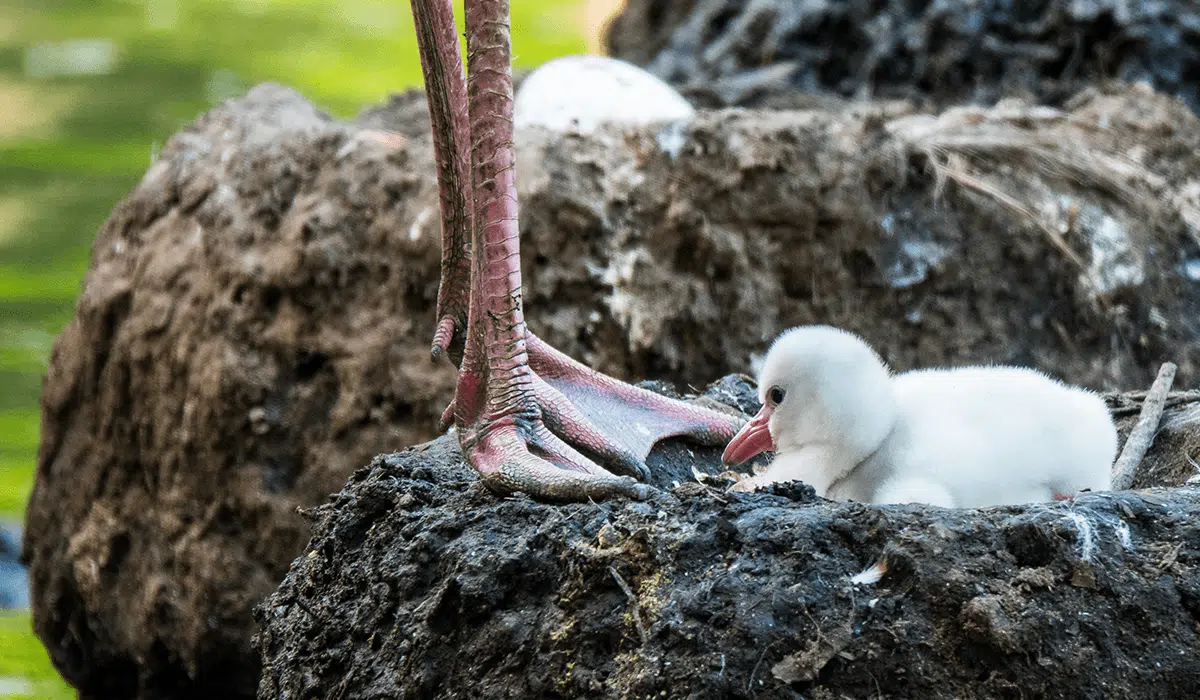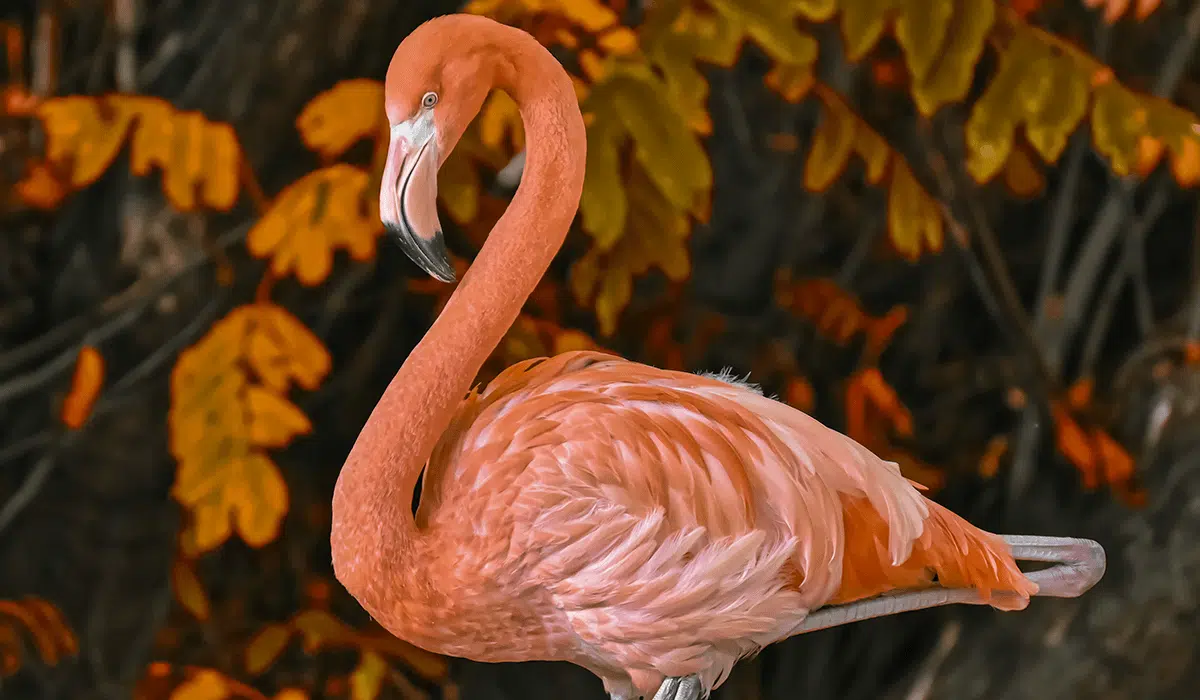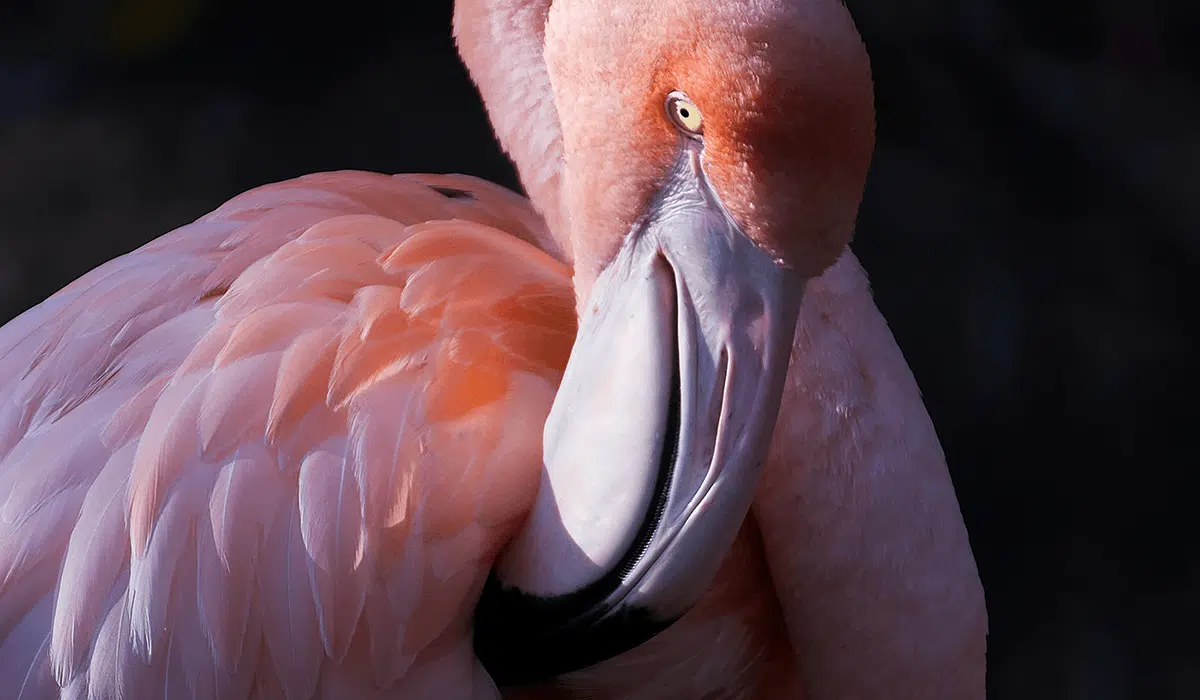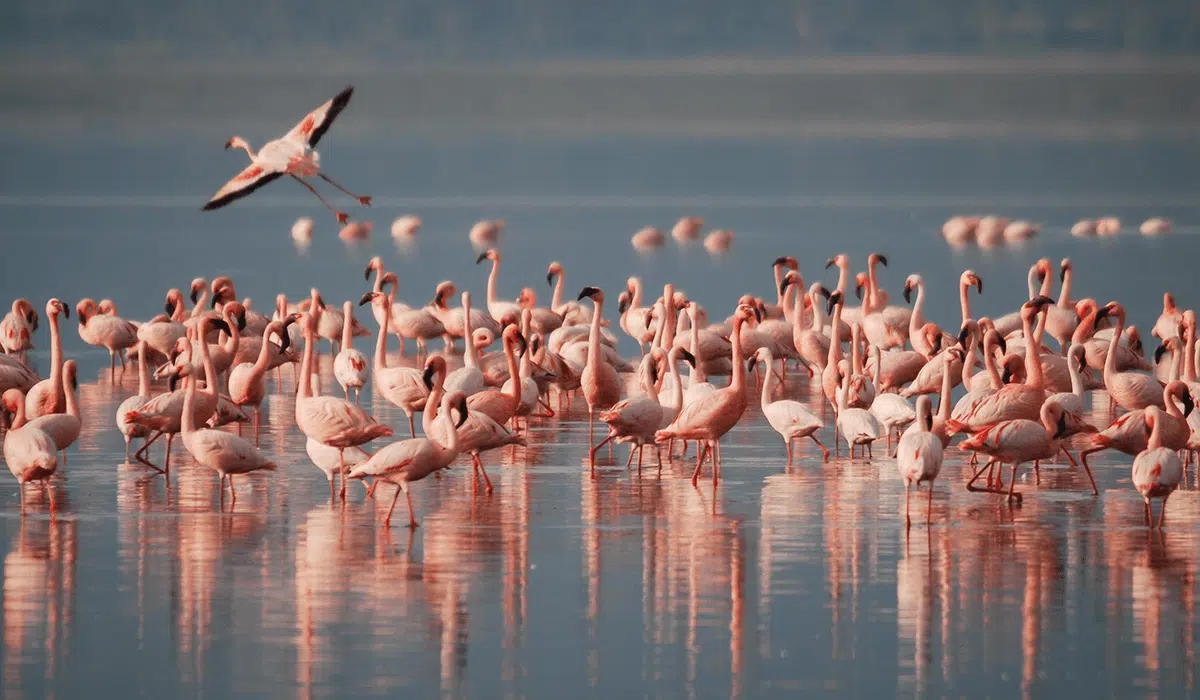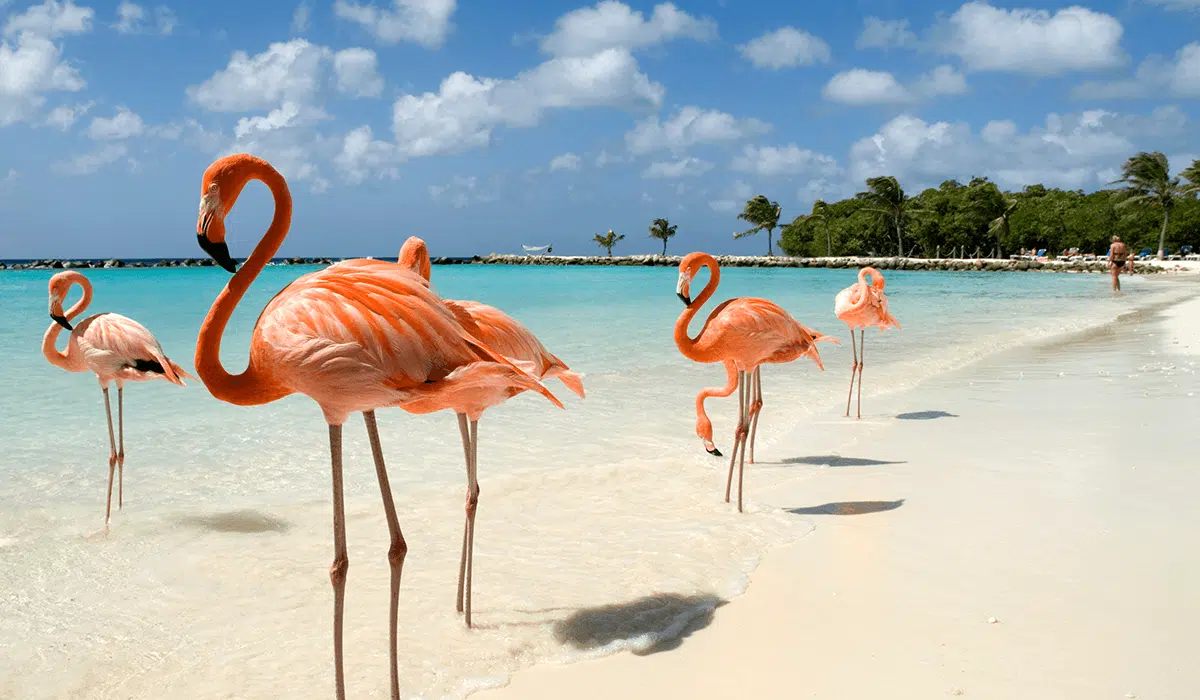Pretty in pink, the Flamingo is one of the most captivating bird species
Standing tall and elegant the Flamingo with its pretty pink plumage is no doubt one of the most colourful of the bird species and a favourite to photograph. In large flocks they are a spectacular sight to behold, so what makes them so intriguing? Read on to discover some interesting flamingo facts and to find out where you can spot them!
A flamboyant pink plumage
The word “flamingo” comes from the Spanish word “flamenco” meaning fire and refers to the bright colour of the birds’ feathers. It is suggested that the flamingo’s bright plumage actually inspired the legend of the mythical firebird, the Phoenix. This is reflected in the name of this wading birds scientific name – Phoenicopteridae, the Phoenix-winged. Flamingos are the only birds that belong to this bird family. Their closest bird relatives are ibises, herons, egrets, cranes and spoonbills, and even ducks, geese, doves and sandgrouse, although they are most closely related to grebes genetically.
Flamingos are not born with their unique “pink” colour, in fact flamingo chicks are born grey or white and it can take them up to three years to reach their mature “pink” colour. Their pink, orange or red colouring comes from their unique ability to collect and metabolise carotenoid pigments in the food they eat, the same pigments that make carrots orange.
A wild flamingo’s diet includes shrimp, plankton, algae, and crustaceans, skimmed from different water sources, which contain this chemical pigment. When flamingos have a diet lacking these pigments, the birds will be a grey or white colour instead, but this does not mean they are not healthy. Depending on what these birds eat, they may also have orange feathers, and many flamingos also have some black on their wings.
A flamingo’s pink colour is not restricted to just their feathers, with the carotenoids they ingest spreading much further, turning their skin and blood pink as well. Pink also means power among the flock, with the birds with the most vivid colouring having the highest status in the colony, showing that they are a strong individual and are good at finding food resources.
A unique bird found in all four corners of the planet
Flamingos can be found on every continent in the world except Antarctica. They like to inhabit areas close to large bodies of water, from freshwater to saltwater, and including mudflats, lakes, coastal lagoons, open marshes, and relatively shallow salt lakes.
There are only six species of flamingos in the world today, as classified by BirdLife International, although several of these species do have subspecies.
Four flamingo species can be found throughout the Americas and the Caribbean. The American (Caribbean) Flamingo (Phoenicopterus ruber) is native to the Caribbean and can be found along the coasts of many of the islands including the Bahamas, Aruba, and Cuba as well as on the coasts of Central America, and in Florida in the United States, while the Greater Flamingo (Phoenicopterus roseus) breeds on the coasts of the Gulf of Mexico.
The Andean (Phoenicoparrus andinus), Puna (James’s) (Phoenicoparrus jamesi) and Chilean (Phoenicopterus chilensis) Flamingos can be seen throughout South America with the Andean and Puna (James’s) Flamingos seen high in the Andes Mountains and other wild populations found in Argentina, north-eastern Chile, Ecuador and Venezuela.
Two species, the Lesser (Phoeniconaias minor) and Greater (Phoenicopterus roseus) Flamingos, are native to Africa, Asia, and Europe. The Lesser and Greater Flamingos can be found in large flocks in Africa throughout the Great Rift Valley, including Lake Natron in Tanzania, and Lake Bogoria National Park and Lake Nakuru in Kenya.
After the breeding season, the flamingos regularly migrate to the Middle East, including the areas of Pakistan, Saudi Arabia, Turkey, and Qatar. Greater Flamingos are also regularly sighted in large numbers along the southern Mediterranean Sea, from Tunisia to Egypt and Israel and along the coasts and on some of the islands in the Atlantic Ocean.
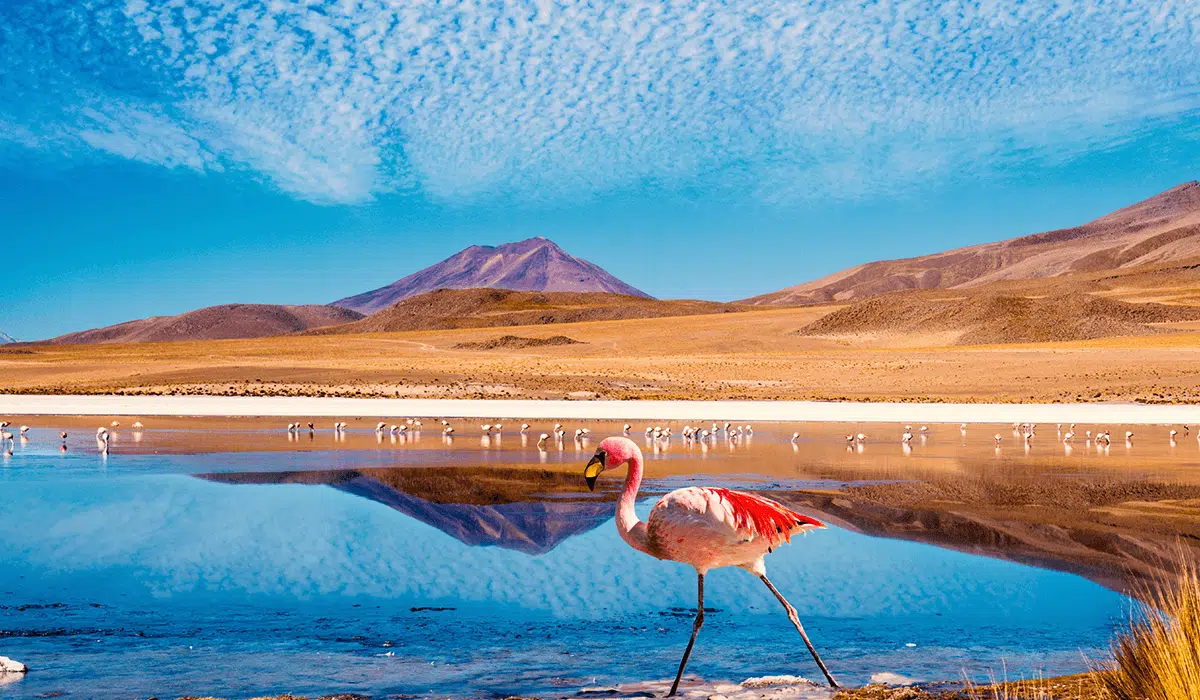
A threatened species
The Chilean, Lesser and Puna Flamingo species are all considered threatened or vulnerable, with the Andean Flamingo being the most threatened species. In fact, there are already at least ten flamingo species believed to already be extinct.
The most prominent threats to flamingos are predators, habitat loss, and illegal poaching for decorative feathers. In some areas they are illegally hunted for their eggs or to harvest their tongues for food. To help protect these remaining six species it will be necessary to put in place good conservation measures and dedicated efforts to help protect these beautiful birds and to ensure their continued survival.
Photo credit: © Pixabay: Alexas Fotos, Mandrill Art, Pattern Pictures, Janneke Alkema, © iStock: Filippo Romeo, Bert Van Wijk, © Unsplash: Slawek K
More interesting facts about flamingos
• Flamingos are social birds preferring to be part of a flock. A flock of flamingos is called a stand, colony, regiment, or flamboyance.
• Flamingos often stand on one leg to preserve body heat, tucking their other leg into their plumage and alternating legs to regulate their body temperature.
• Flamingos have one of the longest bird lifespans living between 20-30 years in the wild and up to 50 years or longer in captivity.
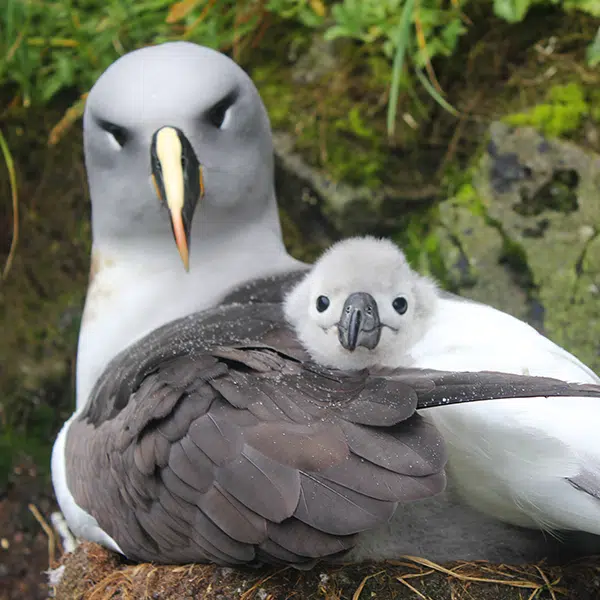
Albatross Conservation in the Subantarctic Islands
If you’re a bird lover, delve into the world of the Albatross and why it’s so important to conserve this majestic species.



